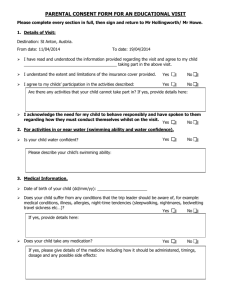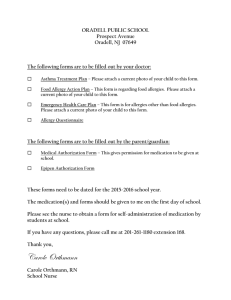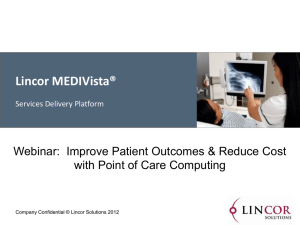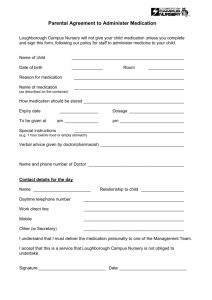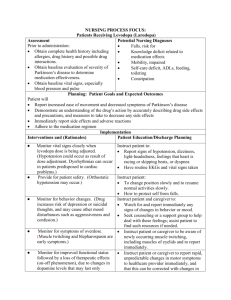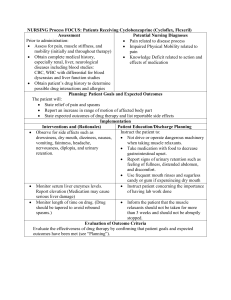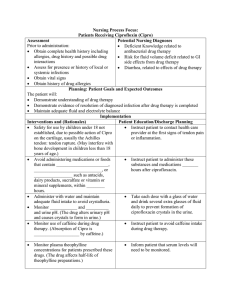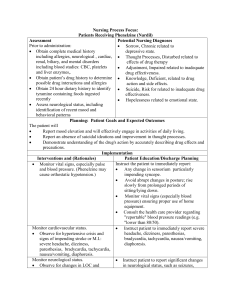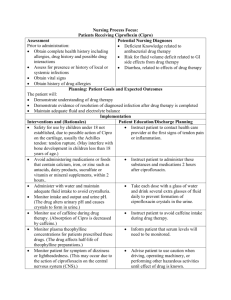PROTOTYPE DRUG: Atorvastatin (Lipitor)
advertisement
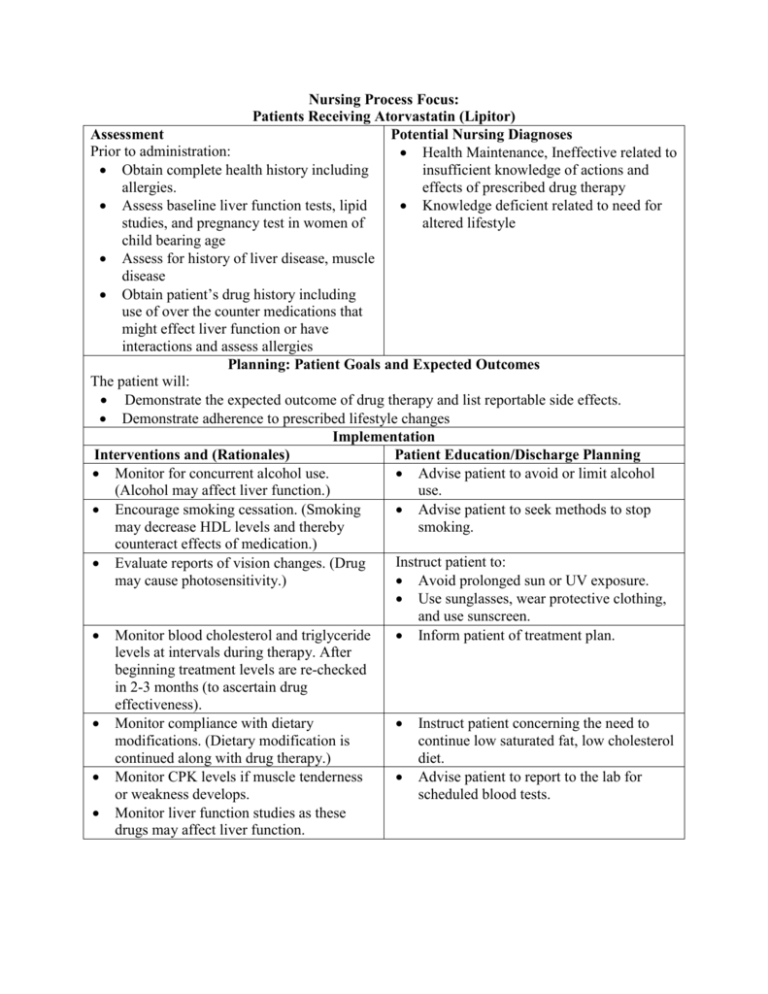
Nursing Process Focus: Patients Receiving Atorvastatin (Lipitor) Assessment Potential Nursing Diagnoses Prior to administration: Health Maintenance, Ineffective related to insufficient knowledge of actions and Obtain complete health history including allergies. effects of prescribed drug therapy Assess baseline liver function tests, lipid Knowledge deficient related to need for studies, and pregnancy test in women of altered lifestyle child bearing age Assess for history of liver disease, muscle disease Obtain patient’s drug history including use of over the counter medications that might effect liver function or have interactions and assess allergies Planning: Patient Goals and Expected Outcomes The patient will: Demonstrate the expected outcome of drug therapy and list reportable side effects. Demonstrate adherence to prescribed lifestyle changes Implementation Interventions and (Rationales) Patient Education/Discharge Planning Monitor for concurrent alcohol use. Advise patient to avoid or limit alcohol (Alcohol may affect liver function.) use. Encourage smoking cessation. (Smoking Advise patient to seek methods to stop may decrease HDL levels and thereby smoking. counteract effects of medication.) Instruct patient to: Evaluate reports of vision changes. (Drug may cause photosensitivity.) Avoid prolonged sun or UV exposure. Use sunglasses, wear protective clothing, and use sunscreen. Monitor blood cholesterol and triglyceride Inform patient of treatment plan. levels at intervals during therapy. After beginning treatment levels are re-checked in 2-3 months (to ascertain drug effectiveness). Monitor compliance with dietary Instruct patient concerning the need to modifications. (Dietary modification is continue low saturated fat, low cholesterol continued along with drug therapy.) diet. Monitor CPK levels if muscle tenderness Advise patient to report to the lab for or weakness develops. scheduled blood tests. Monitor liver function studies as these drugs may affect liver function. Evaluation of Outcome Criteria Evaluate the effectiveness of drug therapy by confirming that patient goals and expected outcomes have been met (see “Planning”). Nursing Process Focus: Patients Receiving Cholestyramine (Questran) Assessment Potential Nursing Diagnoses Obtain complete health history including Knowledge deficient related to medication allergies, drug history and possible drug regimen interactions. Constipation and GI side effects related to drug mechanism of action Assess baseline lipid studies and pregnancy test if indicated Injury, Risk for related to elevated Assess for history of impaired GI cholesterol function, chronic constipation, severe hemorrhoids, dysphagia Planning: Patient Goals and Expected Outcomes The patient will: Comply with prescribed medication schedule and regimen. Comply with measures to regulate bowel elimination. Implementation Interventions and (Rationales) Patient Education/Discharge Planning Inform patient: Evaluate patient understanding of drug regimen. Of treatment plan. About planning medication time schedule. Of need to add daily multivitamin supplement Monitor compliance with drug therapy. Inform patient of need to take medication (May take 30 days or more to produce for indefinite, long-term period. maximum effect.) Monitor compliance with dietary Inform patient that maximum therapeutic modifications, weight management, effects are obtained with drug therapy smoking cessation and exercise with drug and lifestyle modifications. therapy. Monitor bowel function. (Constipation and Instruct patient to increase fiber and even impaction may occur with decrease fluids for constipation. bowel function.) Evaluation of Outcome Criteria Evaluate the effectiveness of drug therapy by confirming that patient goals and expected outcomes have been met (see “Planning”). Nursing Process Focus: Patients Receiving Gemfibrozil Assessment Potential Nursing Diagnoses Prior to administration Knowledge deficient related to drug therapy Assess baseline lipid studies, PT / INR if on coumadin, blood glucose, liver Noncompliance related to side effects function tests, and CBC Noncompliance related to prolonged Assess for history of gallbladder therapy disease or hepatic dysfunction Obtain patient’s drug history including use of over the counter medications and assess allergies Planning: Patient Goals and Expected Outcomes The patient will: Comply with prescribed medication schedule and regimen. Demonstrate knowledge of drug therapy Implementation Interventions and (Rationales) Patient Education/Discharge Planning Instruct patient to: Monitor for safety (medication may cause dizziness and blurred vision) Use caution when driving or performing other dangerous tasks until drug effects are Monitor for the following adverse effects: known. severe stomach pains nausea & vomiting, fever chills sore throat, diarrhea, or muscle Report any adverse effects to a health care cramping. Report immediately. provider immediately: severe stomach pains nausea & vomiting, fever chills sore throat, diarrhea, or muscle cramping Monitor triglyceride and cholesterol levels Instruct patient to report to lab for periodic during therapy (to evaluate effectiveness of blood tests to evaluate response to drug. drug therapy). Advise patient Monitor PT/INR closely of patients taking coumadin (dose alteration may be needed). Of the importance of monitoring Monitor skin for petechiae or ecchymosis coagulation due to interaction with (may indicate abnormal clotting times). gemfibrozil. To report bruising to the health care provider Monitor diet (medication should be used in Inform patient regarding the possible need conjunction with a diet low in cholesterol to adjust dietary habits to include low and fat) cholesterol/low fat foods Evaluation of Outcome Criteria Evaluate the effectiveness of drug therapy by confirming that patient goals and expected outcomes have been met (see “Planning”).

